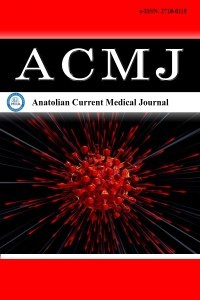1.
Hsia DS, Grove O, Cefalu WT. An update on sodium-glucose co-transporter-2 inhibitors for the treatment of diabetes mellitus.Curr Opin Endocrinol Diabetes Obes. 2017;24(1):73-79.
2.
Liu J, Li L, Li S, et al. Effects of SGLT2 inhibitors on UTIs andgenital infections in type 2 diabetes mellitus: a systematic reviewand meta-analysis. Sci Rep. 2017;7(1):2824.
3.
Geerlings SE, Brouwer EC, Gaastra W, Verhoef J, Hoepelman AIM.Effect of glucose and pH on uropathogenic and non-uropathogenicEscherichia coli: studies with urine from diabetic and non-diabeticindividuals. J Med Microbiol. 1999;48(6):535-539.
4.
Petersmann A, Müller-Wieland D, Müller UA, et al. Definition,classification and diagnosis of diabetes mellitus. Exp ClinEndocrinol Diabetes. 2019;127:S1-S7.
5.
Lovic D, Piperidou A, Zografou I, Grassos H, Pittaras A,Manolis A. The growing epidemic of diabetes mellitus. Curr VascPharmacol. 2020;18(2):104-109.
6.
Zheng Y, Ley SH, Hu FB. Global aetiology and epidemiologyof type 2 dia- betes mellitus and its complications. Nat RevEndocrinol. 2018;14:88-98.
7.
Faselis C, Katsimardou A, Imprialos K, Deligkaris P, KallistratosM, Dimitriadis K. Microvascular complications of type 2 diabetesmellitus. Curr Vasc Pharmacol. 2020;18(2):117-124.
8.
Cloete L. Diabetes mellitus: an overview of the types, symptoms,complications and management. Nurs Stand. 2022;37(1):61-66.
9.
Gupta K, Sahm DF, Mayfield D, Stamm WE. Antimicrobialresistance among uropathogens that cause community acquiredurinary tract infections in women: a nationwide analysis. ClinInfect Dis. 2001;33(1):89-94.
10.
Carrondo MC, Moita JJ. Potentially preventable urinary tractinfection in patients with type 2 diabetes—a hospital-basedstudy. Obes Med. 2020;17:100190.
11.
Kamei J, Yamamoto S. Complicated urinary tract infections withdiabetes mellitus. J Infect Chemother. 2021;27(8):1131-1136.
12.
Al Qurabiy HE, Abbas IM, Hammadi AA, Mohsen FK, SalmanRI, Dilfy SH. Urinary tract infection in patients with diabetesmellitus and the role of parental genetics in the emergence of thedisease. J Med Life. 2022;15(8):955-962.
13.
Berbudi A, Rahmadika N, Tjahjadi AI, Ruslami R. Type 2diabetes and its impact on the immune system. Curr DiabetesRev. 2020;16(5):442-449.
14.
Nitzan O, Elias M, Chazan B, Saliba W. Urinary tract infectionsin patients with type 2 diabetes mellitus: review of prevalence,diagnosis, and man- agement. Diabetes Metab Syndr Obes.2015;8:129-136.
15.
Gorter KJ, Hak E, Zuithoff NP, Hoepelman AI, Rutten GE. Riskof recurrent acute lower urinary tract infections and prescriptionpattern of antibiot- ics in women with and without diabetes inprimary care. Fam Pract. 2010;27(4):379-385.
16.
Zheng Z, He D, Chen J, et al. Risk of urinary tract infection inpatients with type 2 diabetes mellitus treated with dapagliflozin:a systematic review and meta-analysis of randomized controlledtrials. Clin Drug Investig. 2023;43(4):209-225.
17.
Puckrin R, Saltiel MP, Reynier P, Azoulay L, Yu OHY, Filion KB.SGLT-2 inhibitors and the risk of infections: a systematic reviewand meta-analysis of randomized controlled trials. Acta Diabetol.2018;55(5):503-514.
18.
Merész G, Szabó S, Dóczy V, Hölgyesi Á, Szakács Z. A húgyútifertozések relatív gyakorisága metforminnal és SGLT2-gátlóvalkezelt 2-es típusú diabetes mellitusban szenvedo betegekben.Hálózati metaanalízis. Orv Hetil. 2020;161(13):491-501.
19.
Bodke H, Wagh V, Kakar G. Diabetes mellitus and prevalenceof other comorbid conditions: a systematic review. Cureus.2023;15(11):e49374.
20.
Liu F, Ling Z, Xiao Y, et al. Alterations of urinary microbiotain type 2 diabetes mellitus with hypertension and/orhyperlipidemia. Front Physiol. 2017;8:126. doi:10.3389/fphys.2017.00126

